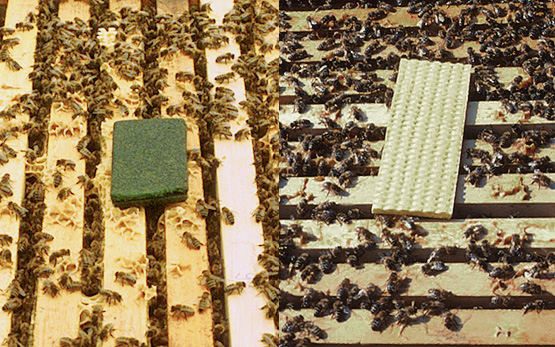In the 1990s, the Bee Research Centre took part in a screening programme testing the potential effectiveness of over 100 essential oils and essential oil components against the varroa mite. Although sage, hyssop and thyme oils proved interesting, only thymol has been used in acaricide products. Thymol treatments require little effort, and there are a variety of preparations on the market. The advantages and drawbacks of thymol use are listed in the articles "Apilife VAR: A new varroacide with thymol as the main ingredient" and "THYMOVAR for Varroa control".
Use of essential oils for the control of Varroa jacobsoni (Oud.) in honey bee colonies (PDF, 1 MB, 20.01.2017)
A. Imdorf, S. Bogdanov, R. Ibáñez Ochoa, N. W. Calderone (1999)







